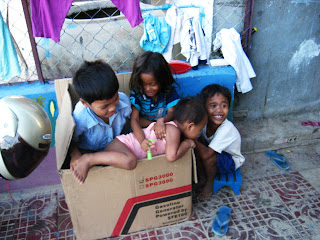 Well, I must first say that Ho Chi Minh City aka Saigon is utter madness. Imagine standing on a street corner watching herds of honking motorbikes zoom past you like a Disney cartoon of Goofy attempting to cross the street. I'm pretty sure motorbikes outnumber people here. Aside from that, HCMC is just another large city. We only spent two days there. Saw the Reunification Palace which is decked out in 70s decor asian style.
Well, I must first say that Ho Chi Minh City aka Saigon is utter madness. Imagine standing on a street corner watching herds of honking motorbikes zoom past you like a Disney cartoon of Goofy attempting to cross the street. I'm pretty sure motorbikes outnumber people here. Aside from that, HCMC is just another large city. We only spent two days there. Saw the Reunification Palace which is decked out in 70s decor asian style.NAM, War and Tears

The War Museum was quite a heart-wrenching experience. Simple and plain with halls of pictures, this museum will scare you and if you're America it may just haunt you. After being in Phnom Penh and seeing the horrors of the Khmer Rouge regime at the Killing Fields and Tuol Sleng, I couldn't help but find comparisons between the tactics. It's sickening really. What was especially interesting was the exhibit of photos by photographers who had died in the war. Then there's the pictures of the lasting effects of Agent Orange, not to mention the pickled deformed fetuses in one corner. This museum made me never want to go back to the US, especially with the double war in Afghanistan and Iraq. But, it's home and I've got the return ticket already.
 Mui Ne Hey Hey
Mui Ne Hey HeyFrom there, we moved up the coast to resort Mui Ne. Boring boring for longer than a day, unless you want to drop $250 and learn to kite surf for a day or surf or just relax on the beach. Ok, so maybe not that boring, but we've done plenty of that already aside from kite surfing. The white and red sand dunes were amazing. It felt like a time warp to Morrocco. My favorite was the Fairy Creek or Fairy Trail. You walk a km or two down murky ankle-deep waters like walk through the river Styx to a fairly mediocre waterfall. One side of the walk is full of green and life while the other is sand and death. It's truly an incredible sight. Not to mention that it felt like we needed some M16s to hold high above our heads and the water to be eye level. Amazing is an understatement for this mini-trek.

Nha Trang and it's Jungle boogie Beach
We went diving in Nha Trang for $35 for two dives including lunch. It's definitely cheaper than Thailand for certifications. Advanced SSI was $175 and gives you six dives. We went to Octupus Divers, which supposedly is one of the better dive centers. I regret not doing the Advanced Course, but perhaps it'll allow me more freedom with my money when we get to Tokyo at the end of the month.
Next stop Jungle Beach, a must for any traveler. For $22 a night you get a secluded private beach, a bamboo hut, three comunal meals a day, afternoon fruit snack, ping pong table, free wifi, and a bonfire each night. It may seem pricey for those who have been living on $12 a day, but it's really worth it. The resort is within walking distance to a waterfall where dumb tourists such as myself jump off and fall about 12m into the cool water below (and that's the medium jump!). The high one is about 15-17m! It was totally worth it!
Rocking You from Saigon to the DMZ
Well, that's all for now folks. Stay tuned for Hoi An and Hue, some crazy tailors and 5,000 dong beers (about $0.20).



